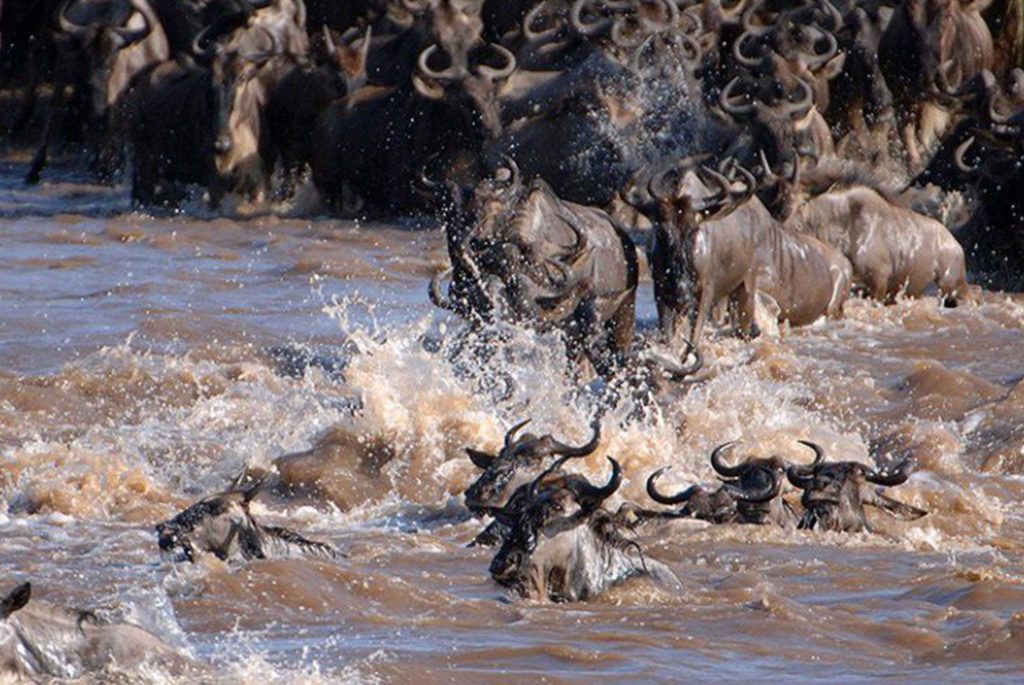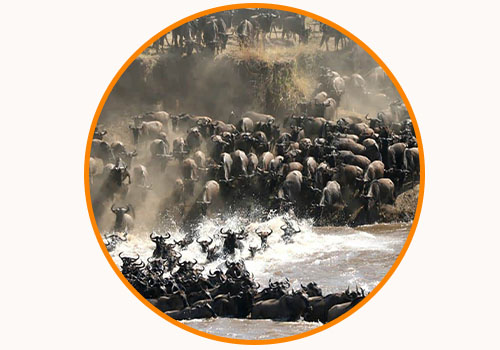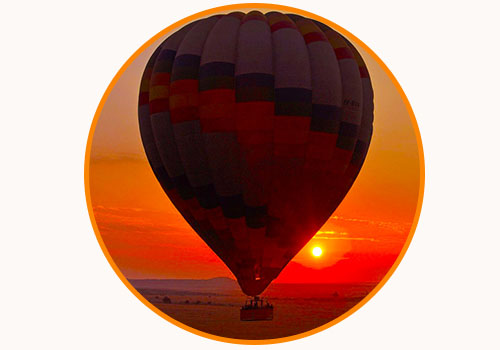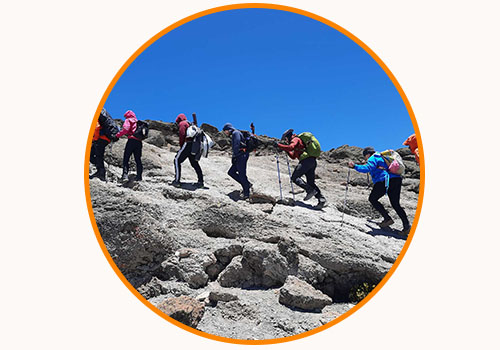Serengeti Greate Migration

The greatest show on Earth
The great Serengeti wildebeest migration is the movement of vast numbers of the Serengeti’s wildebeest, accompanied by large numbers of zebra, and smaller numbers of Grant’s gazelle, Thomson’s gazelle, eland and impala. These move in an annual pattern which is fairly predictable. They migrate throughout the year, constantly seeking fresh grazing and, it’s now thought, better quality water.
The precise timing of the Serengeti wildebeest migration is entirely dependent upon the rainfall patterns each year – here we explain how the broad pattern works.
This migration, month by month, is shown on the map below – the moving red represents the main herds.
For more information on the Serengeti migration area and the wildebeest migration, read on – see the month-by-month descriptions below, and the video below that.
Moving migration maps
Below are detailed month-by month, the typical migration pattern of the Serengeti’s great wildebeest migration. This migration always varies from year to year, in response mainly to variations in the weather, the available grazing and available water. But these are the best general guide that we have to its location.
Month by month: the Serengeti wildebeest migration
Late November and December
The short rains begin around early November. A little after this, in late November and December, the herds of the wildebeest migration arrive on the short-grass plains of the Serengeti. These are south and east of Seronera, around Ndutu and include the north of the Ngorongoro Conservation Area. Dispersed across these plains, wildebeest and zebra are everywhere – feeding on the fresh, nutritious grasses. They stay here through January, February and March, with most wildebeest calves born in a short window around February. Gradually they spread west across these plains, then around April they start their great migration north.
By May
By May the Serengeti’s wildebeest all seem to be moving north, migrating to seek fresh grazing and water. The area around Moru Kopjes and west of Seronera is then hectic with a series of moving columns, often containing hundreds of thousands of animals – joined by many zebra, and a scattering of Thomson’s and Grant’s gazelles.
Around June
Some of the migration then head due north of Seronera, but most are usually further west. Around June the wildebeest migration is often halted on the south side of the Grumeti River, which has some channels which block or slow their migration north. The wildebeest then congregate there, in the Western Corridor, often building up to a high density before crossing the river. The river here is normally a series of pools and channels, but it’s not continuous – and so whilst they always represent an annual feast for the Grumeti River’s large crocodiles, these aren’t usually quite as spectacular as the crossings of the Mara River, further north.
July and August
The wildebeest migration continues moving northwards during July and August, often spreading out across a broad front: some heading through Grumeti Reserve and Ikorongo, others north through the heart of the Serengeti National Park.
September
September sees the herds spread out across the northern Serengeti, where the Mara River provides the migration with its most serious obstacle. This river gushes through the northern Serengeti from Kenya’s adjacent Maasai Mara Game Reserve. Watching the frantic herds of the wildebeest migration crossing the Mara River can be very spectacular; there are often scenes of great panic and confusion. It’s common to see herds cross the Mara River north on one day, and then back south a few days later.
By Octobe
By October the wildebeest herds are migrating again with more accord: all are heading south, through western Loliondo and the Serengeti National Park’s Lobo area, returning to the green shoots which follow the rains on the short-grass plains of the southern Serengeti in November.
Then the whole Serengeti Wildebeest migration starts again …
Total Cost Covers:
- Pick up from / drop off at Arusha town (at any hotel)
- 02 days private safari for 02 – 06 persons
- Professional Safari Guide
- Entrence Fee to All National Park
- Drinking Water
- Private 4 x 4 safari with roof for game viewing
- Daily bottle of mineral water during Safari
- All meals during safari (breakfast, lunch, dinner
Total Cost does not Cover:
- International Flights
- All items of a personal nature
- Gratuities for safari guide and lodge staff (please tip separately)
- Visa and Insurances charges





